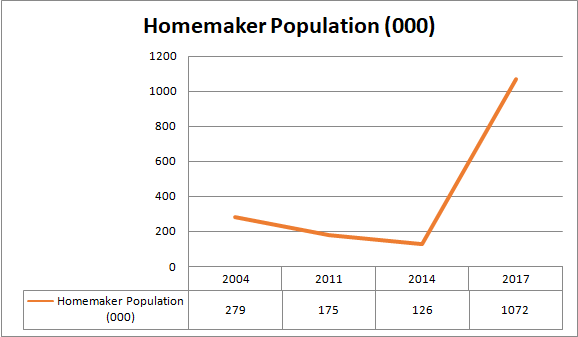CLAIM:
“In the 2013 People’s Election Manifesto, ZANU PF promised to create 2,2 million jobs. Over the past five years, 4,5 million have been gainfully employed in new jobs in both the informal and formal sectors, with agriculture, mining and manufacturing contributing over 80%.” – ZANU-PF 2018 Election Manifesto, page 54.
By ZimFact Staff
CONTROVERSIAL DATA
Zimbabwe’s jobs data has long been a subject of controversy. While many independent analysts often claim that Zimbabwe’s unemployment rate is above 90 percent, the latest official Zimbabwe National Statistics Agency (Zimstat) data puts the jobless figure at 6,6 percent.
Even the World Bank, citing International Labour Organisation (ILO) data, puts Zimbabwe’s unemployment rate lower, at 5,2 percent in 2017.

Zimstat uses the International Labour Organisation’s broad definition of employment, which liberally takes into account informal economic activity.
The ILO’s 19th International Conference of Labour Statisticians (ICLS) defines persons in employment as:
“All those of working age who, during a short reference period, were engaged in any activity to produce goods or provide services for pay or profit. They comprise: (a) employed persons “at work”, i.e. who worked in a job for at least one hour; (b) employed persons “not at work” due to temporary absence from a job, or to working-time arrangements (such as shift work, flexitime and compensatory leave for overtime).”
Similarly, Zimstat defines employment as comprising “all persons aged 15 years and above, who during the last 7 days preceding the interview, did some work even for just one hour for pay, profit or family gain, in cash or in kind.”
Zimstat data, while using internationally accepted norms of computing employment, shows that 67 percent (3,75 million) out of Zimbabwe’s economically active population of 5,6 million (according to the recently released 2017 inter-censal demographic survey) are ‘own-account workers.’
The ILO defines own-account workers as those who are self-employed and do not engage employees on a continuous basis.
SHARP DECLINE IN ECONOMICALLY ACTIVE POPULATION
The 2017 inter-censal demographic survey says Zimbabwe’s unemployment rate is just below 7 percent, a remarkable improvement from 11,3 percent in the 2014 labour market survey. The 2011 survey put the jobless rate at 10,7 percent.
Taken at face value, the data appears to show that Zimbabwe has nearly halved its jobless rate in the past four years, despite a marked slowdown in economic growth over the period.
However, closer scrutiny of the data shows a sharp decline in the economically active population between 2014 and 2017.

The 2017 inter-censal survey puts Zimbabwe’s economically active population at 5 611 809, from a total population of 13 572 560. The 2014 labour survey, on the other hand, showed that 7 065 311 people were classified as economically active, out of a total population of 13 447 286.
This translates into a 21 percent reduction in the economically active population between 2014 and 2017.
HOMEMAKER NUMBERS SWELL
The data also shows a surge in the economically inactive ranks from 684 122 in 2014 to 2 460 369 in the 2017 survey.

Homemakers – stay-at-home persons who manage households for no pay – have increased to 1 071 944 in 2017, from 125 649 in 2014. Similarly, the number of students has vaulted to 1 037 077 from 331 123 three years ago.
There was a less dramatic change in the number of the retired and infirm, from 227 350 in 2014 to 351 348 in the latest survey.
INFORMAL VERSUS FORMAL EMPLOYMENT
The ICLS cautions that statistics of persons in ‘own-use production work’ or subsistence such as agriculture, fishing and forestry, who constitute the majority of Zimbabwe’s officially recognised labour force, could distort the data.
“For operational purposes, an important test to verify the subsistence nature of the activity is that it is carried out without workers hired for pay or profit,” the 2013 ICLS resolved.
“For purposes of monitoring conditions of labour market performance as related to insufficient access to, or integration in, markets, or to other factors of production, statistics of this group should be identified and reported separately to serve policy needs.”
Own-account workers account for 64,8 percent of the 5,6 million Zimbabweans deemed to be in employment, the bulk of them in subsistence agriculture. This would also include thousands of vendors who have invaded Harare’s streets and other towns across the country.
The 2017 inter-censal survey shows there are 1 282 489 Zimbabweans in paid employment, against 1 531 633 recorded in 2014. The 2017 statistics do not break down paid employees into permanent and casual categories, but in 2014, full-time paid employees numbered 940 146, while temporary or contract workers were recorded as 561 487.

SKILLS
The level of skills in the job market also indicates the quality of work available.
According to Zimstat’s 2014 labour survey, 83 percent of those in jobs are considered unskilled.
Workers who attained O’Level as their highest qualification accounted for 27,2 percent of the labour force in 2014, making the single largest segment of the labour force.
Those with Grade 7 as their highest qualification were the second largest segment, making up 18 percent of the labour force, followed by Form Twos, with 9,5 percent.
Holders of certificates and diplomas were 7,1 percent of the work force, followed by those with no recognised education at 4,6 percent.
Holders of first degrees and post-graduate qualifications accounted for 2 percent of the workforce
LOW RURAL UNEMPLOYMENT?
Zimbabwe’s rural areas typically have a high labour force participation rate (LFPR), compared to urban areas. This is because the broad definition of employment used by Zimstat includes communal farming activity.
As a consequence, the 2011 and 2014 surveys reported rural unemployment rate of 3,4 percent and 2,6 percent, respectively. Over the same periods, urban unemployment was recorded as 26,1 percent and 29,5 percent, respectively.
WHERE ARE THE 4,5 MILLION NEW JOBS?
While ZANU-PF claims 4,5 million new jobs have been created since the 2013 economy, official data shows that, as of 2017, just over 5,2 million Zimbabweans were in jobs, according to Zimstat’s broad definition of employment, which includes both formal and informal activity.
This figure is down from the 6,2 million jobs recorded in the 2014 labour survey.
Official data, therefore, shows the labour market has actually shrunk, dramatised by the increase in homemakers and students.
CONCLUSION:
ZANU-PF’s claim that the economy has added 4,5 million jobs since the last election is demonstrably false, when scrutinised using government’s own data.
The statistics show that about 1 million jobs – broadly defined by both Zimstat and ILO – have been lost between 2014 and 2017.
Do you want to use our content? Click Here











